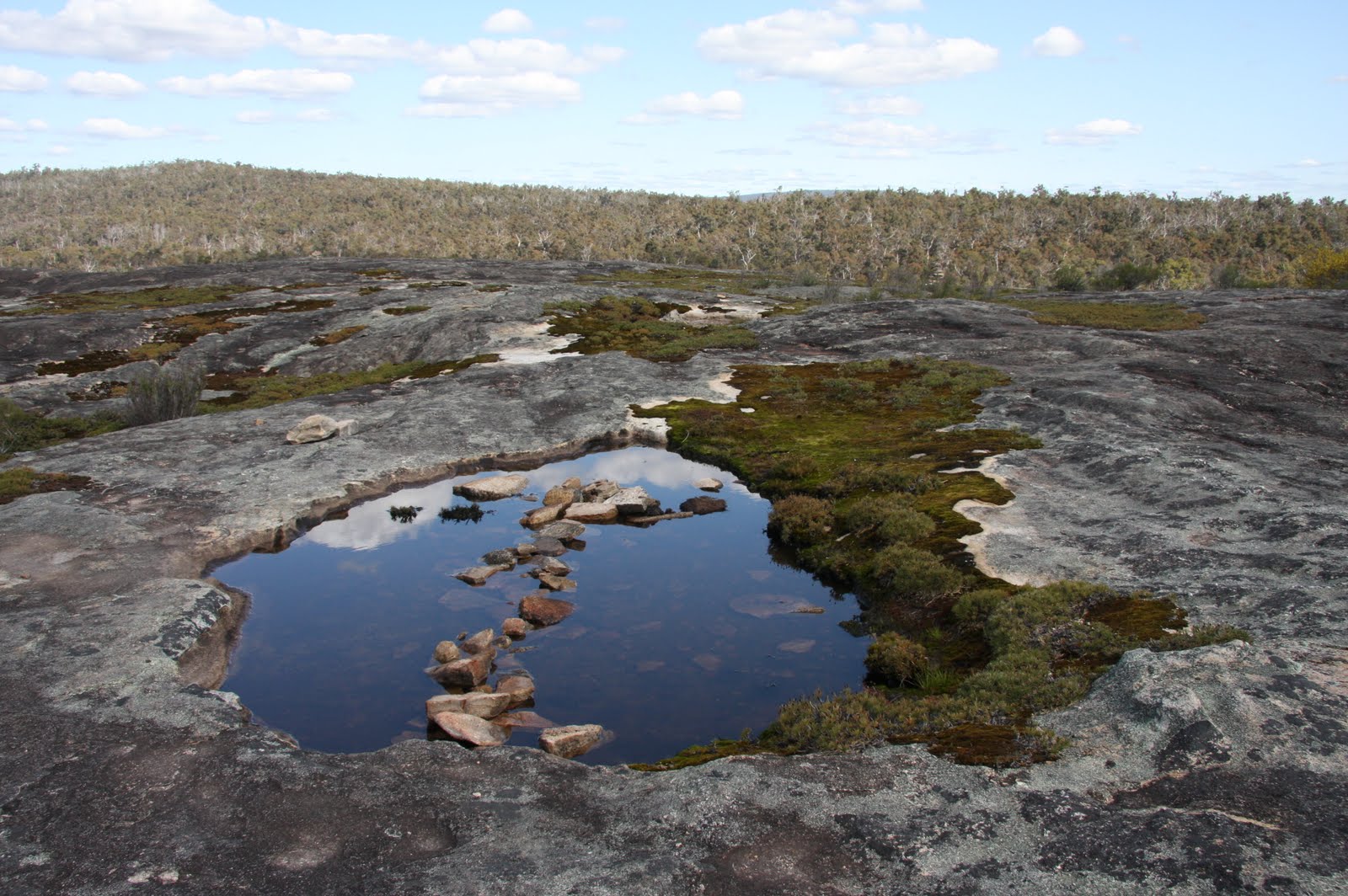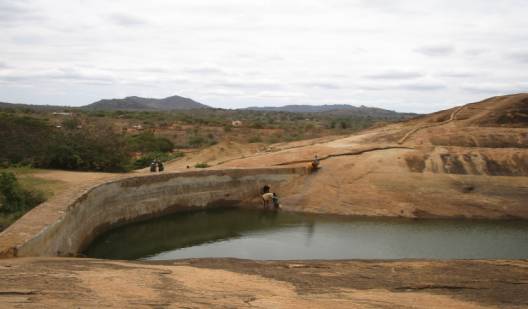Difference between revisions of "Natural rock catchment and Open water reservoir"
(→Reference manuals, videos, and links) |
|||
| Line 54: | Line 54: | ||
==Reference manuals, videos, and links== | ==Reference manuals, videos, and links== | ||
* [http://www.ehow.com/how_6713156_calculate-runoff-coefficient.html How to Calculate Runoff Coefficient]. | * [http://www.ehow.com/how_6713156_calculate-runoff-coefficient.html How to Calculate Runoff Coefficient]. | ||
| + | * [http://www.friendsofkitui.com/waterissues.htm Friends of Kitui] - Water projects. | ||
==Acknowledgments== | ==Acknowledgments== | ||
CARE Nederland, ''Desk Study Resilient WASH systems in drought prone areas''. October 2010. | CARE Nederland, ''Desk Study Resilient WASH systems in drought prone areas''. October 2010. | ||
Revision as of 18:54, 5 April 2012
These are naturally occurring catchments of bare rock that have high runoff coefficients (around 0.9). Water can be stored as an open reservoir behind a retaining structure, with storage capacities ranging from 20 – 4,000 m3, or can be stored directly in a covered storage tank that collects water directly from the catchment.
Contents
Suitable conditions
- The rock that makes up the catchment should be bare and free of vegetation/soil. It should have no fractures or cracks that would result in a loss of water through seepage.
- Site the dams for rock catchments to maximize the natural topography – to get the best volume, make dams on the lower side of existing rock pools.
| Advantages | Disadvantages/limitations |
|---|---|
| - High runoff coefficient = similar to roof catchments in that even small showers produce water - Minimal seepage |
- Not many sites suitable - If building tanks that store water directly, storage capacity is limited compared to an open reservoir |
Construction, operations and maintenance
In general, it seems that smaller scale dams owned privately might have more chance of success in terms of participation in the construction and maintenance processes.
- Water can be stored as an open reservoir – this can be done behind a stone masonry or concrete dam built directly onto the rock, or behind
an earth dam in a non-rocky area at the base of the rock face (for earth dams, see “Natural ground catchment & open water reservoir” for details). Water can also be stored in a covered tank that gets water directly from the rock catchment.
- Cracks/fissures should be sealed up with mortar or concrete.
- Siltation should be reduced by ensuring that the rock catchment is clear of soil and debris, and maintaining it in this state.
- Open water in certain areas can have a high evaporation rate, depending on the climate. Some ways to reduce this might
include: Siting the dam to best use the natural topography to get the deepest reservoir possible, resulting in larger volume to surface area ratio; Covering the catchment or building tanks to collect the water directly.
- Gutters are needed to direct water on the rock catchment towards the reservoir. They can be made from stone masonry using rocks gathered from the catchment during cleaning. Gutters should almost follow the contour but should slope a minimum of 3%. Gutters should be high enough to direct water, but where runoff velocity is very high, some kind of wall structure is needed to slow velocity of runoff before it reaches the gutters.
- Reservoir size (and therefore dam height) can be decided according to water demand (to a certain extent depending on size of catchment), evaporation losses, length of critical period and average rainfall according to the following:
- Determine water requirement (R litres/day)
- Estimate area of reservoir (A m2), evaporation losses from reservoir (E mm/day) and therefore the volume losses per day (A x E litres/day)
- Estimate length of critical period during which water entering the catchment is less than water requirement & losses (T days), in other words, when water requirements are met by using water from reservoir
- Estimate average rainfall entering the catchment reservoir during critical period (Q litres/day) – this should be rainfall x catchment area x runoff coefficient (usually taken as 0.9).
- Catchment area will decrease with increasing slope (e.g. 23% fewer square metres if slope is 40%).
- Calculate effective storage required (S litres) = (R + AxE – Q) x T
- Site should be then surveyed to estimate area (A m2) of reservoir for different values of water level (D) – this will give reservoir capacity which should be greater than storage required (S) to allow for a safety margin. Reservoir capacity can be estimated by the following: (length x width x maximum depth) / 6.175
- Height of dam will be D plus 1m (for flood level & safety margin).
- Dam wall can be built onto rocks with slope of up to 15%, width of dam base must always be 3/5 of dam height, width of crest should be 30cm, special attention should be paid to the rock-wall base as this has potential for leakage, and the upstream side of the dam wall should be rendered with up to 30mm of mortar. Procedures for dam wall construction are given in certain guides.
- Phased construction might provide a manageable way for users to construct their own dams, whereby each dry season the dam is raised until experience shows that capacity is sufficient for water demand. In this case, start with a dam of 2 metres height, then build on it successively to a total of 5 metres in 3 more stages. The advantage of doing this is that you build according to enthusiasm and seeing how much water is stored.
- Access to finance will help to allow farmers to implement dams.
- Fish can be introduced to eat mosquito larvae, while at the same time providing a source of nutrition.
Costs
Field Experiences
Reference manuals, videos, and links
- How to Calculate Runoff Coefficient.
- Friends of Kitui - Water projects.
Acknowledgments
CARE Nederland, Desk Study Resilient WASH systems in drought prone areas. October 2010.


